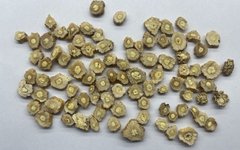Dang Shenis the dried root of the plant Codonopsis pilosula (Franch.) Nannf., also known as Codonopsis pilosula Nannf. var. modesta (Nannf.) L.T. Shen or Codonopsis tangshen Oliv.. It is harvested in autumn, cleaned, and dried.The name Dang Shen first appeared in the book Ben Cao Cong Xin, which states: “According to ancient herbal texts, the best ginseng is from the Shangdang region. Nowadays, true Dang Shen is hard to find, and the varieties sold in the market are numerous and not suitable for use. The ‘true Dang Shen’ mentioned here refers to the ginseng from the Shangdang area in Shanxi (now Changzhi, Shanxi).” The Plant Names and Their Realities contains detailed records: “Dang Shen is abundant in Shanxi. In ancient times, Dang Shen produced in the Shangdang region of Shanxi was considered top quality, hence it is also known as Shangdang Shen.It is produced in Northeast China, North China, and Northwest China. It grows at the edges of forests, in shrubs, or under sparse forests, and is also found in grassy slopes or meadows. It is widely cultivated across China and is one of the commonly used Chinese medicinal materials. It is produced in Inner Mongolia, Shanxi, Gansu, Heilongjiang, and other regions.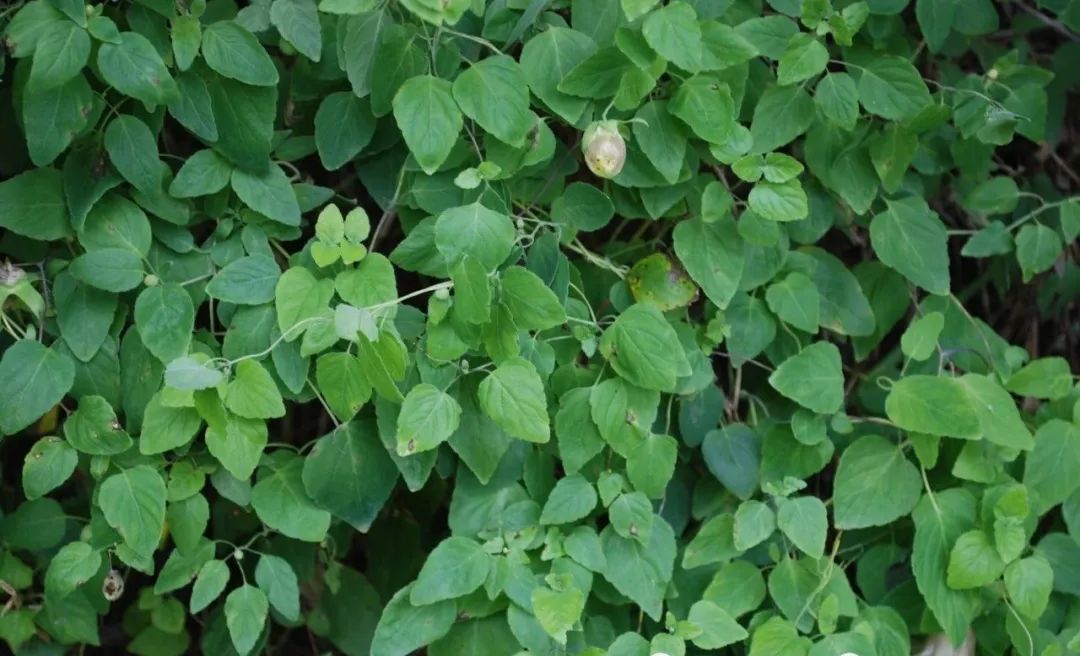 Original plant image 1【Image source: Medicinal Plant Illustrated Guide】】
Original plant image 1【Image source: Medicinal Plant Illustrated Guide】】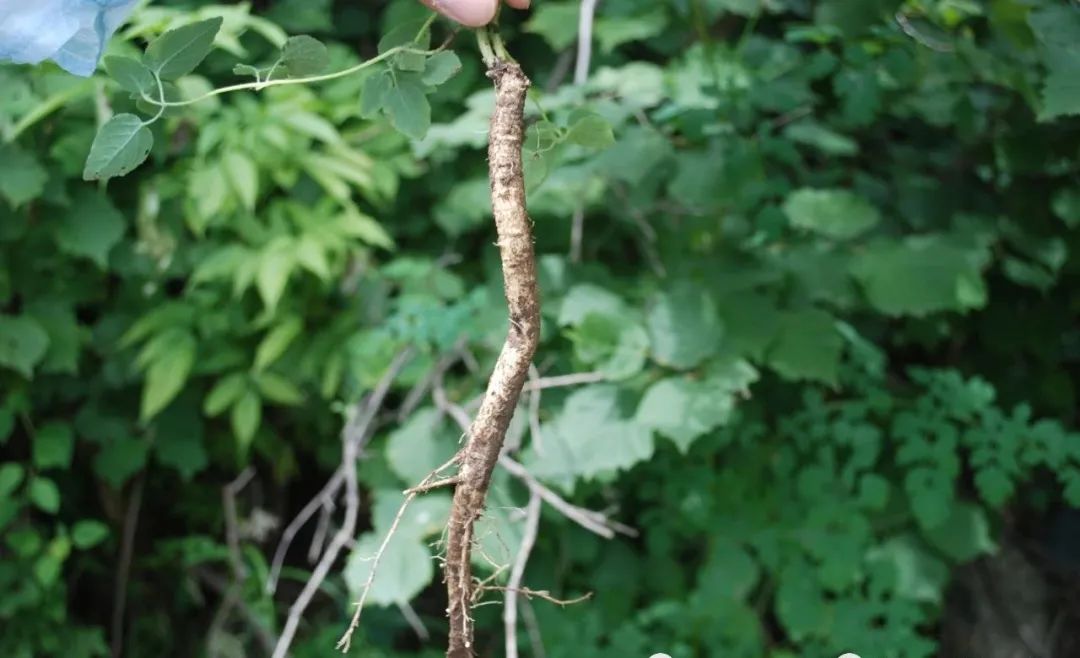 Dang Shen original medicinal material 1【Image source: Medicinal Plant Illustrated Guide】】Effects: It strengthens the spleen, nourishes the lungs, and benefits qi and generates fluids. It is indicated for symptoms of spleen and stomach deficiency, poor appetite, loose stools, fatigue in the limbs, lung deficiency with cough and wheezing, shortness of breath with spontaneous sweating, and deficiency of both qi and blood.
Dang Shen original medicinal material 1【Image source: Medicinal Plant Illustrated Guide】】Effects: It strengthens the spleen, nourishes the lungs, and benefits qi and generates fluids. It is indicated for symptoms of spleen and stomach deficiency, poor appetite, loose stools, fatigue in the limbs, lung deficiency with cough and wheezing, shortness of breath with spontaneous sweating, and deficiency of both qi and blood.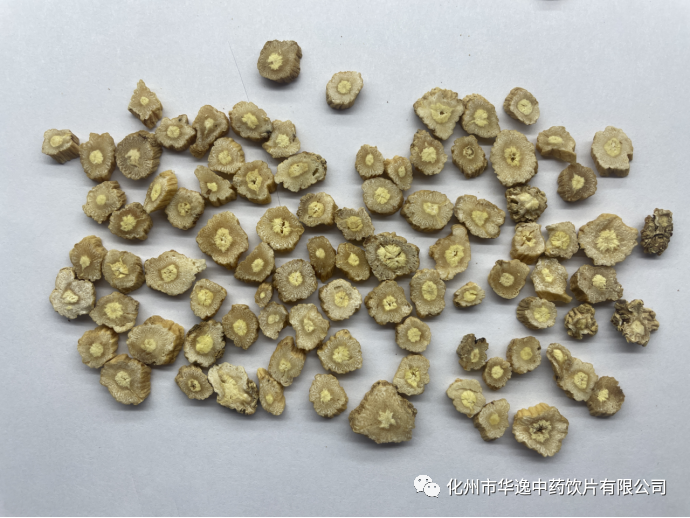 Dang Shen slices: The product appears as thick, round slices. The outer skin is grayish-yellow, yellow-brown to gray-brown, and sometimes the root tip shows numerous wart-like protrusions and buds. The cross-section of the skin is light brown to yellow-brown, while the wood part is light yellow to yellow, with cracks or radial patterns. It has a special aroma and a slightly sweet taste.
Dang Shen slices: The product appears as thick, round slices. The outer skin is grayish-yellow, yellow-brown to gray-brown, and sometimes the root tip shows numerous wart-like protrusions and buds. The cross-section of the skin is light brown to yellow-brown, while the wood part is light yellow to yellow, with cracks or radial patterns. It has a special aroma and a slightly sweet taste.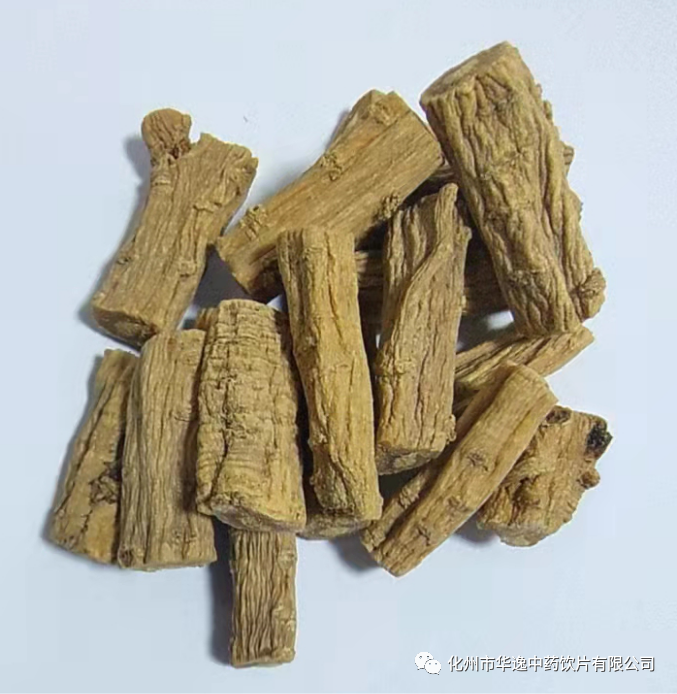 Dang Shen: The product appears as a long cylindrical segment. The root tip has dense ring-like transverse wrinkles, with a slightly soft or slightly hard texture and a bit of toughness. The entire body has longitudinal wrinkles and scattered transverse long pore-like protrusions, and the broken root often has black-brown gelatinous material.
Dang Shen: The product appears as a long cylindrical segment. The root tip has dense ring-like transverse wrinkles, with a slightly soft or slightly hard texture and a bit of toughness. The entire body has longitudinal wrinkles and scattered transverse long pore-like protrusions, and the broken root often has black-brown gelatinous material.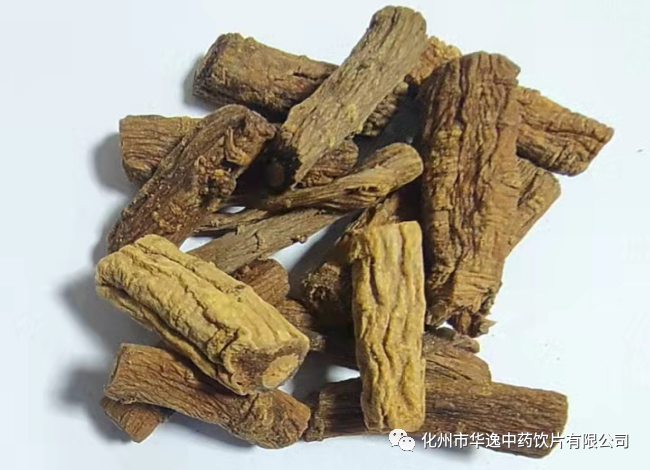 Cooked Dang Shen:Cooked Dang Shen is the processed product of Dang Shen, also known as fried Dang Shen. After frying, the effect of tonifying the middle and benefiting qi is enhanced, which can strengthen the spleen and stomach to stop diarrhea, and can treat symptoms of spleen and stomach deficiency, deficiency of qi and blood, and fatigue. Therefore, compared to Dang Shen, cooked Dang Shen is more suitable for those with spleen and stomach deficiency.
Cooked Dang Shen:Cooked Dang Shen is the processed product of Dang Shen, also known as fried Dang Shen. After frying, the effect of tonifying the middle and benefiting qi is enhanced, which can strengthen the spleen and stomach to stop diarrhea, and can treat symptoms of spleen and stomach deficiency, deficiency of qi and blood, and fatigue. Therefore, compared to Dang Shen, cooked Dang Shen is more suitable for those with spleen and stomach deficiency.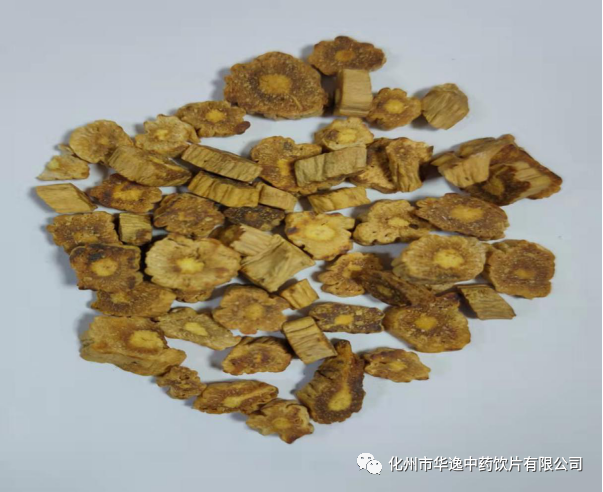 Rice-fried Dang Shen:Rice-fried Dang Shen is a processed product of Dang Shen. It has been known since the Qing Dynasty, as seen in the book Shibing Lun, which states: “Rice-fried treats spleen deficiency and cold diarrhea.” Rice-fried Dang Shen has an old yellow surface and a fragrant aroma, similar to raw Dang Shen. Rice-fried Dang Shen has a clear fragrance and can enhance the effects of harmonizing the stomach, strengthening the spleen, and stopping diarrhea. It is often used for spleen and stomach deficiency, poor appetite, and loose stools.
Rice-fried Dang Shen:Rice-fried Dang Shen is a processed product of Dang Shen. It has been known since the Qing Dynasty, as seen in the book Shibing Lun, which states: “Rice-fried treats spleen deficiency and cold diarrhea.” Rice-fried Dang Shen has an old yellow surface and a fragrant aroma, similar to raw Dang Shen. Rice-fried Dang Shen has a clear fragrance and can enhance the effects of harmonizing the stomach, strengthening the spleen, and stopping diarrhea. It is often used for spleen and stomach deficiency, poor appetite, and loose stools.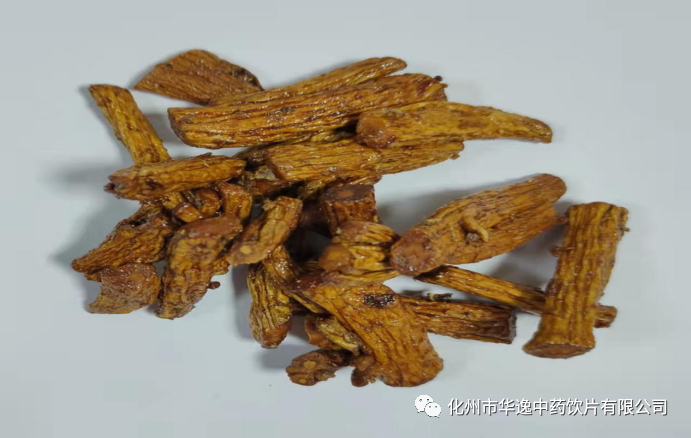 Honey Dang Shen: Honey Dang Shen is a processed product of Dang Shen. It has been known since the Qing Dynasty, as seen in the book Complete Book of Surgical Diagnosis and Treatment. Honey Dang Shen enhances the effects of tonifying the middle, benefiting qi, moistening dryness, and nourishing yin. It is used for symptoms of deficiency of both qi and blood. Dang Shen tonifies qi and can improve the body’s non-specific immune function. Pharmacological studies show that honey Dang Shen is stronger than raw Dang Shen and rice-fried Dang Shen in enhancing the phagocytic ability of macrophages in mice and anti-fatigue capacity, while rice-fried Dang Shen is weaker than raw Dang Shen, thus honey enhances the tonifying effect.
Honey Dang Shen: Honey Dang Shen is a processed product of Dang Shen. It has been known since the Qing Dynasty, as seen in the book Complete Book of Surgical Diagnosis and Treatment. Honey Dang Shen enhances the effects of tonifying the middle, benefiting qi, moistening dryness, and nourishing yin. It is used for symptoms of deficiency of both qi and blood. Dang Shen tonifies qi and can improve the body’s non-specific immune function. Pharmacological studies show that honey Dang Shen is stronger than raw Dang Shen and rice-fried Dang Shen in enhancing the phagocytic ability of macrophages in mice and anti-fatigue capacity, while rice-fried Dang Shen is weaker than raw Dang Shen, thus honey enhances the tonifying effect.
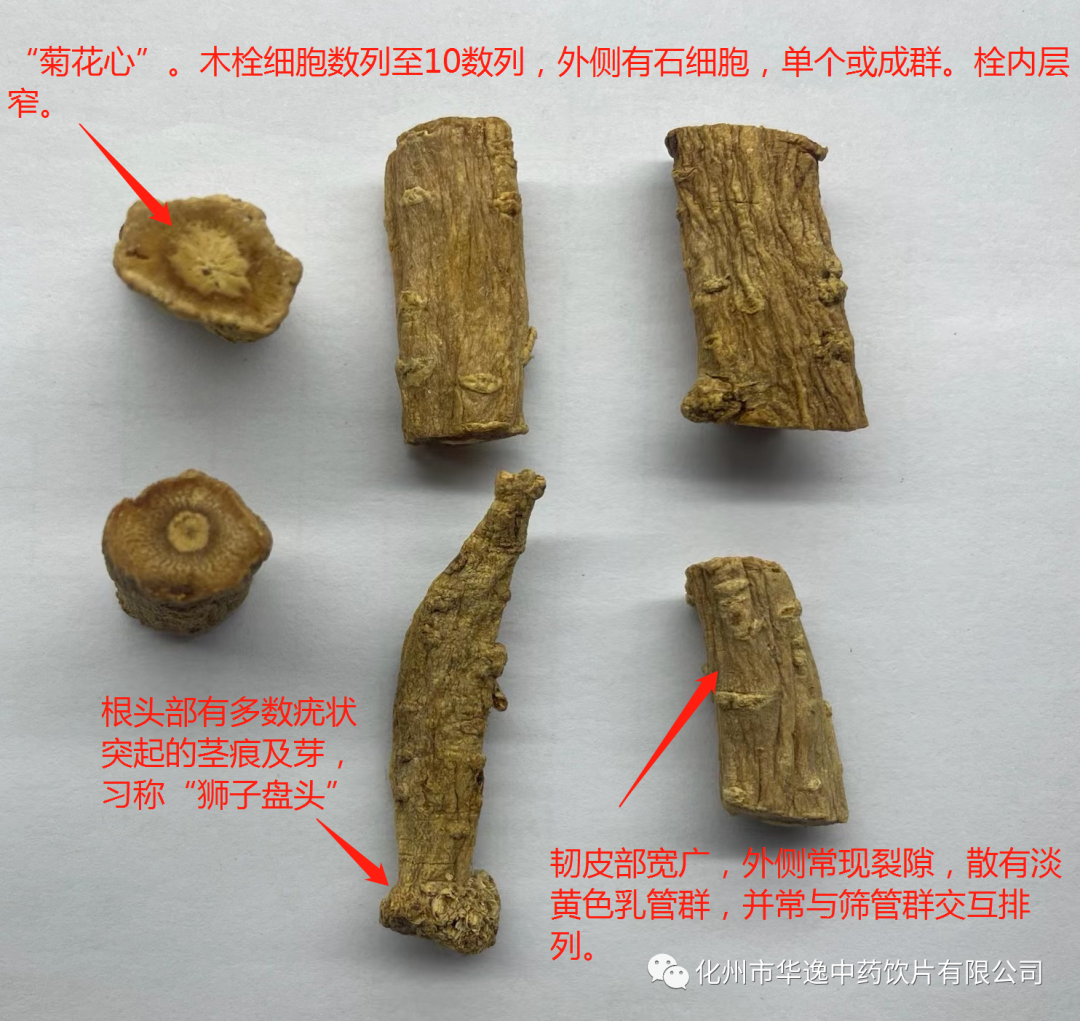
Main identification points: 1. The outer skin is grayish-yellow, yellow-brown to gray-brown.
2. Sometimes the root tip shows numerous wart-like protrusions and buds.3. The cross-section of the skin is light brown to yellow-brown, while the wood part is light yellow to yellow, with cracks or radial patterns.Market grades of Dang Shen: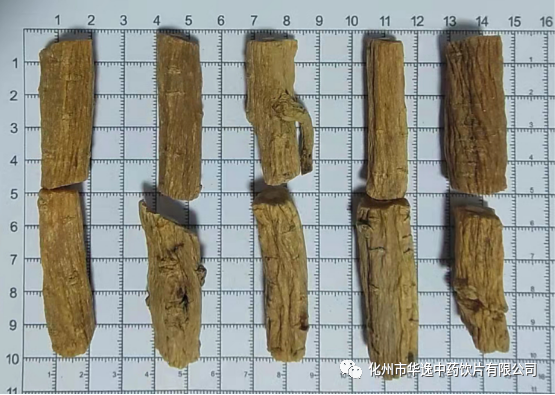 Dang Shen0.8-1.0
Dang Shen0.8-1.0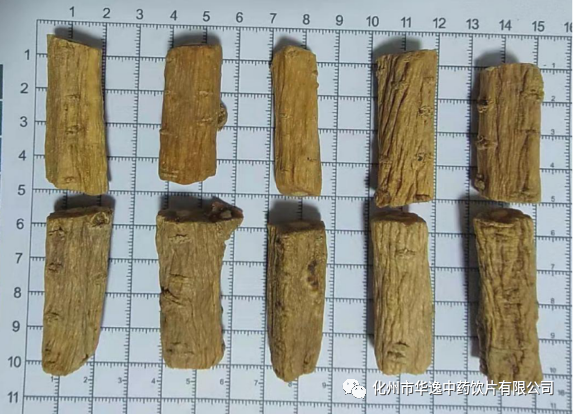 Dang Shen1.0-1.2
Dang Shen1.0-1.2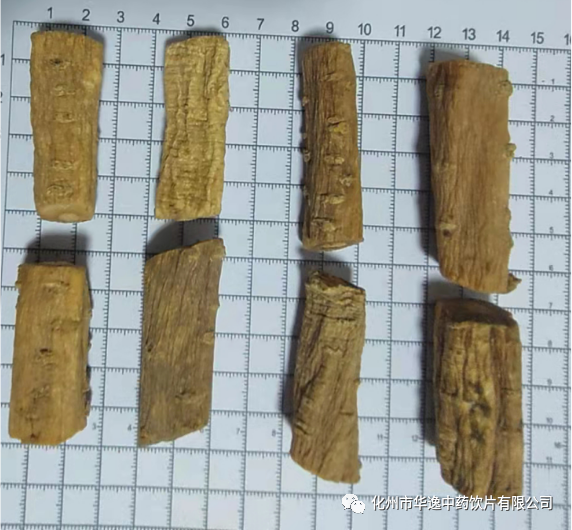 Dang Shen1.2-1.5
Dang Shen1.2-1.5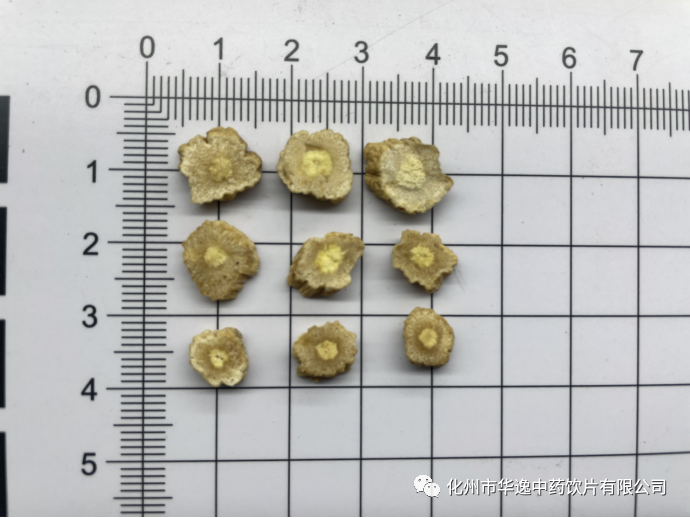 Dang Shen slices0.8-1.0
Dang Shen slices0.8-1.0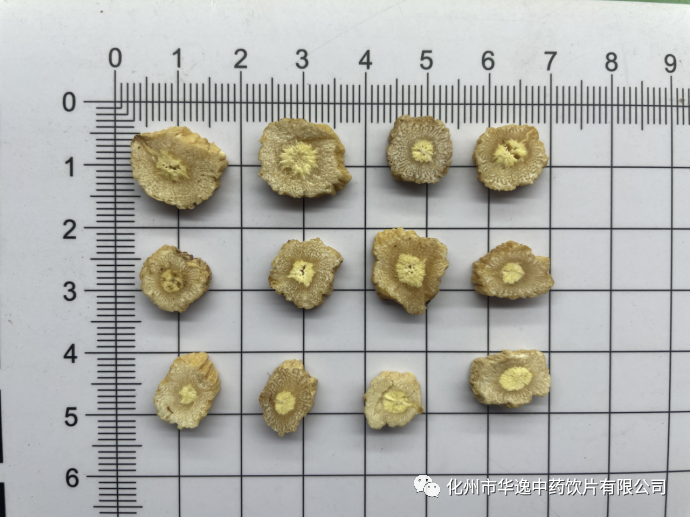 Dang Shen slices 0.8-1.3
Dang Shen slices 0.8-1.3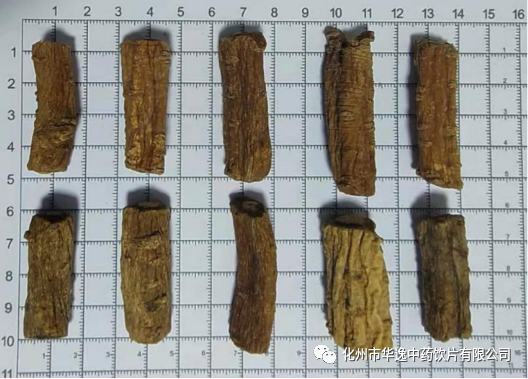 Cooked Dang Shen0.8-1.0
Cooked Dang Shen0.8-1.0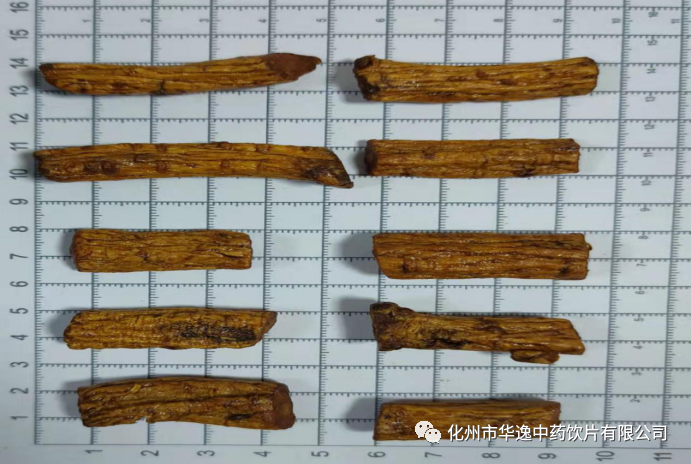 Honey Dang Shen0.6-0.8
Honey Dang Shen0.6-0.8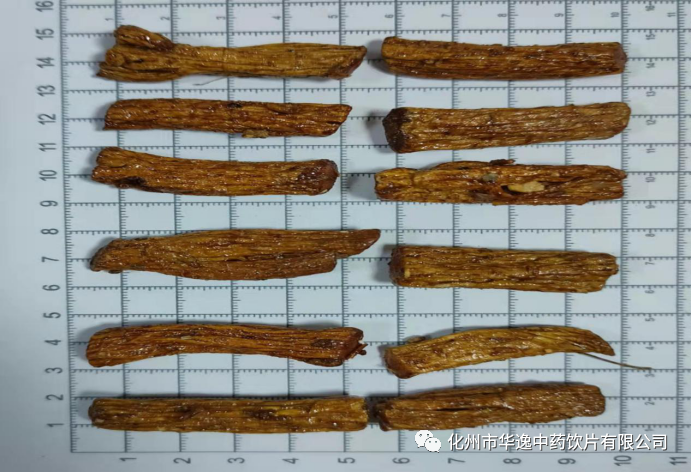 Honey Dang Shen0.8-1.0
Honey Dang Shen0.8-1.0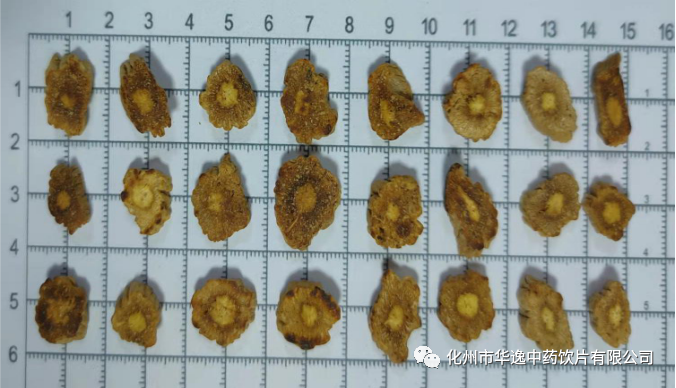 Rice-fried Dang ShenInferior and counterfeit products
Rice-fried Dang ShenInferior and counterfeit products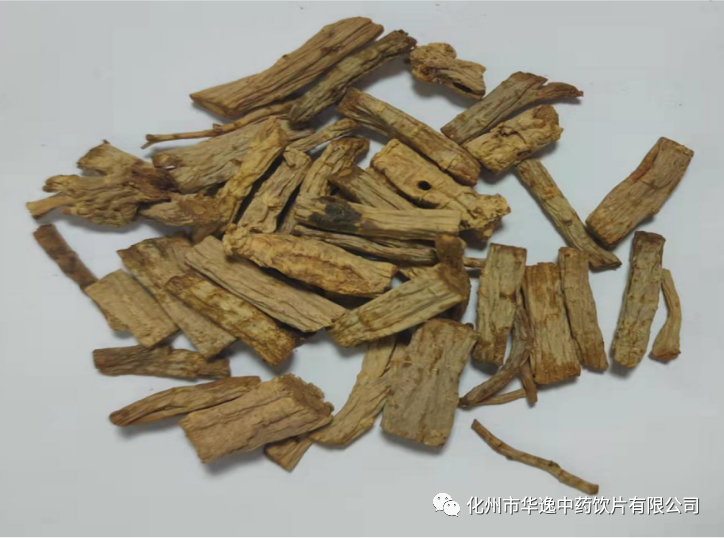 Inferior Dang Shen: The surface of Dang Shen is very powdery, easily infested with insects, and may show insect holes. If damp, it becomes soft.
Inferior Dang Shen: The surface of Dang Shen is very powdery, easily infested with insects, and may show insect holes. If damp, it becomes soft.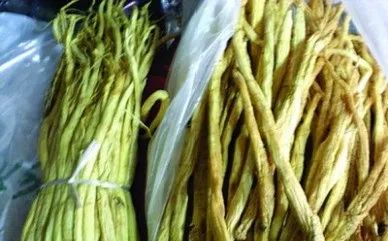 Sulfur-fumigated inferior Dang Shen: The surface of sulfur-fumigated Dang Shen is yellowish-white, and the more sulfur it contains, the more pronounced the yellowish-white color. The texture is softer, and a noticeable irritating sour smell can be detected, with a slightly sour taste. Sulfur-fumigated (left) and un-fumigated (right)【Image source: Xiamen Evening News】
Sulfur-fumigated inferior Dang Shen: The surface of sulfur-fumigated Dang Shen is yellowish-white, and the more sulfur it contains, the more pronounced the yellowish-white color. The texture is softer, and a noticeable irritating sour smell can be detected, with a slightly sour taste. Sulfur-fumigated (left) and un-fumigated (right)【Image source: Xiamen Evening News】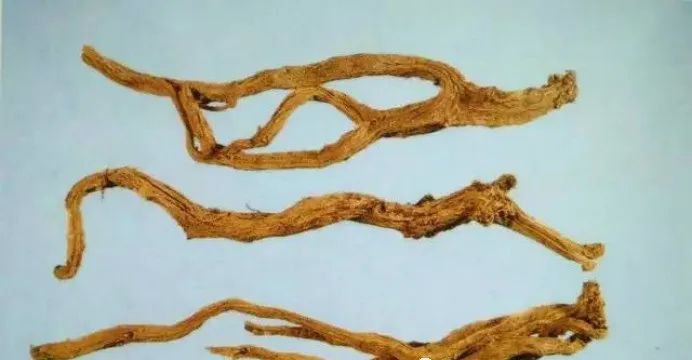 Large-flowered Leopard (counterfeit product) 【Image source: Chinese Medicinal Material Authenticity Identification Guide】Identification points: 1. Multi-branched; 2. The cross-section is uneven; 3. Chewing produces a lot of residue and astringent taste.
Large-flowered Leopard (counterfeit product) 【Image source: Chinese Medicinal Material Authenticity Identification Guide】Identification points: 1. Multi-branched; 2. The cross-section is uneven; 3. Chewing produces a lot of residue and astringent taste.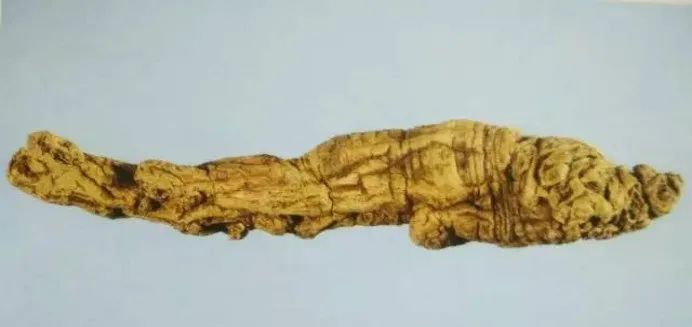 Sheep’s milk (counterfeit product) 【Image source: Chinese Medicinal Material Authenticity Identification Guide】Identification points: 1. Spindle-shaped, thick when broken; 2. Often has small tumor-like protrusions; 3. Light in weight, very porous; 4. The cross-section has no yellow heart; 5. Chewing has a spicy taste.How to select Dang Shen1. Observe the shape Look at the surface texture of Dang Shen; if the texture is prominent, it indicates a long growth period. High-quality Dang Shen should have many root hairs, so check for traces of root hairs on the surface.2. Observe the color The surface of Dang Shen should be grayish-yellow, gray-brown, or yellow-brown. If it has been sulfur-fumigated, the color will be more translucent, and the skin will appear bright yellow. Choose Dang Shen with a natural color. The cross-section should be yellowish-white with a chrysanthemum heart for better quality.3. Smell the aroma When selecting Dang Shen, if you can smell a sour sulfur odor, it indicates that the Dang Shen has undergone a sulfur-fumigation process.How to determine if Dang Shen has deteriorated1. Dang Shen is very prone to moisture and mold; if not stored properly, it can easily turn black and deteriorate, showing mold spots.2. Dang Shen contains a lot of sugar, and if not stored properly, it may be infested with insects, which will leave visible insect holes on the surface.3. If the material of Dang Shen becomes loose, the color becomes murky, the surface becomes sticky, or it exudes oily substances, and has a pungent smell, it indicates that the Dang Shen has deteriorated. Therefore, to ensure that Dang Shen does not deteriorate, we need to seal it in an oilskin paper bag or a clean glass bottle and store it in a well-ventilated, cool, and dry place. If you place some yellow glutinous rice that has been fried over low heat or a small amount of Sichuan pepper around the storage area, it can help prevent moisture, making it less likely for Dang Shen to absorb moisture and deteriorate..
Sheep’s milk (counterfeit product) 【Image source: Chinese Medicinal Material Authenticity Identification Guide】Identification points: 1. Spindle-shaped, thick when broken; 2. Often has small tumor-like protrusions; 3. Light in weight, very porous; 4. The cross-section has no yellow heart; 5. Chewing has a spicy taste.How to select Dang Shen1. Observe the shape Look at the surface texture of Dang Shen; if the texture is prominent, it indicates a long growth period. High-quality Dang Shen should have many root hairs, so check for traces of root hairs on the surface.2. Observe the color The surface of Dang Shen should be grayish-yellow, gray-brown, or yellow-brown. If it has been sulfur-fumigated, the color will be more translucent, and the skin will appear bright yellow. Choose Dang Shen with a natural color. The cross-section should be yellowish-white with a chrysanthemum heart for better quality.3. Smell the aroma When selecting Dang Shen, if you can smell a sour sulfur odor, it indicates that the Dang Shen has undergone a sulfur-fumigation process.How to determine if Dang Shen has deteriorated1. Dang Shen is very prone to moisture and mold; if not stored properly, it can easily turn black and deteriorate, showing mold spots.2. Dang Shen contains a lot of sugar, and if not stored properly, it may be infested with insects, which will leave visible insect holes on the surface.3. If the material of Dang Shen becomes loose, the color becomes murky, the surface becomes sticky, or it exudes oily substances, and has a pungent smell, it indicates that the Dang Shen has deteriorated. Therefore, to ensure that Dang Shen does not deteriorate, we need to seal it in an oilskin paper bag or a clean glass bottle and store it in a well-ventilated, cool, and dry place. If you place some yellow glutinous rice that has been fried over low heat or a small amount of Sichuan pepper around the storage area, it can help prevent moisture, making it less likely for Dang Shen to absorb moisture and deteriorate..

